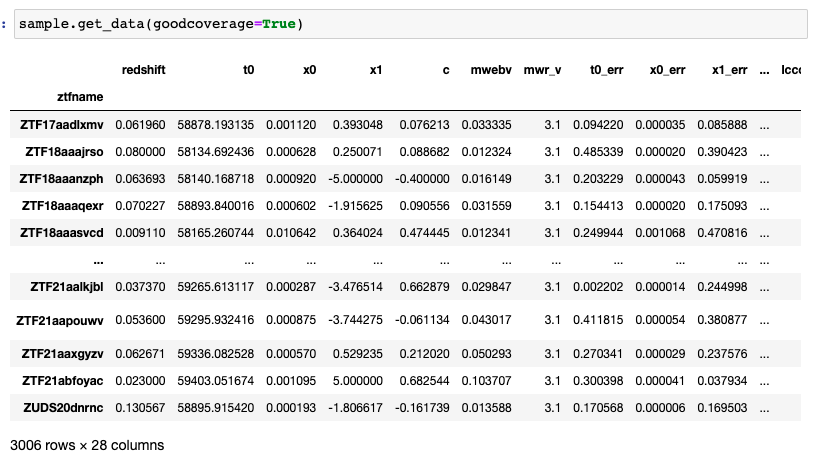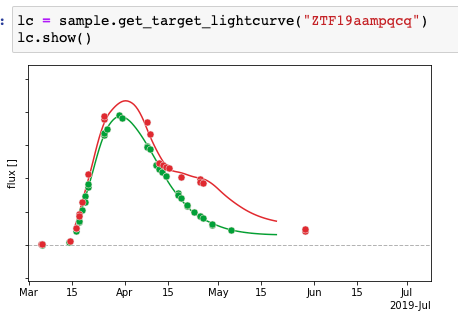package to read and parse the ZTF SN IDR dataset
pip install ztfidr 
git clone https://github.com/MickaelRigault/ztfidr.git
cd ztfidr
python setup.py installAND you need to have clone the ZTF Interal datarelease (password protected).
you need to provide the fullpath as a global environment variable using: $ZTFIDRPATH
Assuming your ztfcosmoidr/dr2 repository is stored at a location provided by $ZTFIDRPATH:
import ztfidr
sample = ztfidr.get_sample() # UPDATE FOR YOUR CASEThe dataframe containing all the relevant information is accessible as sample.data:
sample.dataand sample.get_data() you have many options like x1_range, t0_range, redshift_range or goodcoverage=True...
To visualise an individual target lightcurve (e.g. ZTF19aampqcq), do:
lc = sample.get_target_lightcurve("ZTF19aampqcq")
lc.show()host data are accessible using io.get_host_data() that returns a multi-index columns dataframe.
host_data = io.get_host_data()
the top-level columns are "2kpc", "4kpc" and "global". If you want the dataframe only for the "global" data, simply do:
global_host_data = host_data.xs("global", axis=1)
same for "2kpc" local
local_host_data = host_data.xs("2kpc", axis=1)
The "Direct Light Ratio" (dlr) corresponding to effective distance from the host center is inside the "global" columns as host_dlr.
You can either access it as:
dlr = global_host_data["host_dlr"]
or directly from host_data as:
dlr = host_data.xs("host_dlr", axis=1, level=1)
More functionalities are implemented, check ztfidr.get_hosts_data() etc.

